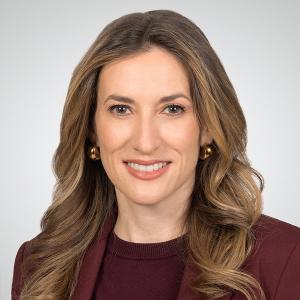Family Dynamics
and Philanthropy

- Family philanthropy can be a rewarding and effective way to make a positive social impact, but family dynamics can often get in the way of the most well-meaning efforts.
- A solid governance system improves communication and decision-making and ensures that all family members understand their roles and how they fit into their family's philanthropic mission.
- Good governance can also have a positive effect on family dynamics beyond the family's philanthropic endeavors.
Engaging in philanthropy as a family can be profoundly gratifying, bringing family members closer together — often across multiple generations — as they work to make a positive and lasting impact on society.
Unfortunately, family dynamics — the ways that family members relate to one another — can create roadblocks to successful family philanthropy. Maintaining a cohesive approach and making joint family decisions can prove increasingly challenging over time.
Taking the time to craft a governance system that considers your family’s particular dynamics can help — to improve communication and decision-making, ensure that all family members understand their roles and how they fit into your family’s philanthropic mission, and increase the overall effectiveness and satisfaction of your family philanthropy.
An effective governance framework can also strengthen family ties and overall family dynamics beyond your charitable giving.
When it comes to joint philanthropic endeavors, the ways family members interact with one another — inevitably influence decision-making.
Family Dynamics Can Make Philanthropy More Challenging
Not only does each family have its own unique way of behaving; within each family, each member tends to assume a specific role, forming distinct relationships with other family members, including various internal alliances and often rivalries and tensions. Who leads, who defers, who argues, and who withdraws from conflict — these tend to assume familiar patterns in family interactions. The size of the family, birth order, gender, and many other factors all contribute to this consistent family dynamic.
When it comes to joint philanthropic endeavors, the ways family members interact with one another — their behaviors and communication habits in spousal relationships, sibling interactions, and even between family members and their advisors — inevitably influence decision-making. Long-ingrained behavior patterns, particularly when families are unaware of them, can make philanthropic interactions more difficult.
Maybe a sibling feels ignored by other family members and disengages from the philanthropic process. Such perceptions can be exacerbated when family members have different levels of experience and knowledge about philanthropy generally or the causes being supported.
Or perhaps family members don’t see eye to eye on areas of focus for giving or the most appropriate giving strategies — this is most common across generations, particularly when it comes to engaging younger generations — and family members end up working at cross purposes.
In other instances, poor communication about roles and responsibilities and ingrained family dynamics can lead to uncomfortable situations where a family member is not meeting expectations.
In all of these cases, families can lose cohesion. Not only can this diminish the effectiveness of their philanthropy, but family conflicts can actually increase and push family members further apart — the exact opposite of the intended results.
Good governance practices can be helpful with your family’s foundation or with other joint philanthropic activities, such as when families adopt a collective approach to donor-advised funds.
Effective Governance Can Help
Implementing an effective governance system — that is, a formal legal and operational framework, including all decision-making and other policies and procedures — can improve family dynamics and enhance the effectiveness of your family’s philanthropy.
Good governance practices can be helpful with your family’s foundation or with other joint philanthropic activities, such as when families adopt a collective approach to donor-advised funds.
Unfortunately, many families treat governance informally, without explicit consideration of important principles, policies, and practices — and the underlying family dynamics that inform them. Governance systems simply evolve without close examination or conscious direction, often unintentionally granting certain family members authority to direct and guide the behavior of others.
While many families still manage to make philanthropic decisions collectively and see the positive social impact of their giving without a formal governance system, others can struggle. This is particularly true when navigating transitions, such as the death of the founder(s), new leadership on the board, or an influx of assets.
The Many Benefits of Good Governance
Effective governance can help:
- Clarify and focus your charitable objectives
- Aid in the creation of legal structures appropriate for your objectives and your family's unique characteristics
- Ensure that all philanthropic policies and day-to-day practices are aligned with your family's principles and mission
- Improve communication and group decision-making processes, ensuring that all constituent voices are heard
- Make certain that all family members understand their roles and responsibilities - and how they tie into your family's philanthropic mission
The Keys to Effective Governance
When creating your governance system, it's important to develop a set of policies and practices that are customized to meet the specific needs of your family:
- Focus your mission and vision. If you haven’t done so already, consider and clarify your values, vision, and mission for your joint philanthropy, and then draft a succinct mission statement driven by those values.
Mission Statement Best Practices
A mission statement:
- Reflects shared individual and family values
- Unites the board around a common purpose and goals
- Communicates to potential grantees the essence of the foundation's work
- Is comprehensive yet focused enough to provide direction
- Provides a framework through which the board makes decisions
A sample mission statement:
The ABC Foundation supports educational institutions in Phoenix, Arizona, with emphasis on education and community-based organizations that provide assistance to economically underserved families.
- Create legal structures driven by your family's particular characteristics and mission. A private foundation, donor-advised fund, or direct giving — or a combination of some or all of these approaches — are among the most popular options that could make sense for your family. For a full discussion of legal structures and giving approaches, please see A Closer Look, "Ways to Give."
- Governance documents should reflect family goals. Boilerplate governance structures — bylaws, trust agreements, articles of incorporation — often prove problematic when establishing private family foundations, and many families struggle to implement the terms of these documents and engage together as a board in a professional manner. When done well, these policies, guidelines, and legal structures are customized for each family by providing a feasible framework in which to operate.
You should also make sure to establish procedures for updating your governance documents. If the ways you actually run your foundation evolve and depart from the practices outlined in your governance system — maybe your bylaws require a majority agreement for all decisions, but in practice, your family is actually requiring unanimity — or if you’re finding that the governance system is not working as intended, you’ll be able to consider and implement revisions.
Case Study: Surveys Can Inform Governance
For busy and geographically dispersed families just starting to implement governance principles and policies, we have found the use of electronic surveys to be an effective way of gathering input and data to inform governance systems.
For one family, we designed a custom survey to solicit input regarding how to refocus the mission of the foundation to have a greater impact in the region where the family business is based.
Through the survey, we discovered a common interest in funding education and job pathways with the long-term vision of making the community a more attractive place to live and work. The Bessemer team then leveraged this survey data to facilitate a family meeting where they reached an agreement on how to focus their grantmaking approach.
- Establish written decision-making processes that make sense for your family. Involving all foundation board members (or, if you’re not using a foundation, family members and/or advisors) in this process can reduce the potential for tension and confusion about roles and responsibilities. This is especially important when working with multiple generations.
- Assign the right people to the right roles . There can be an unspoken expectation that family will be involved in the foundation across generations, with little indication that certain levels of expertise should be required for certain roles on the board. Such an approach, when commitment levels and expertise vary among family members, can mean less effective philanthropy. A policy might indicate that any family member wishing to serve on the foundation board must meet certain qualifications, such as reaching age 21 and having expertise in one aspect of the foundation’s mission.
It’s important to note that many types of expertise can be useful on a foundation board, and they may not always entail formal qualifications. Members may have experience and knowledge in diverse areas — philanthropy, finance, operations, areas of charitable focus, etc. It can help to examine the skill sets of your foundation members and try to find the best fit for their particular areas of expertise.
At the same time, you should also be open to incorporating non-family members when needed. Not only can this bring in specific expertise, but it can also help counterbalance negative family dynamics. - Create a governance system that aligns family interests across generations. Involving the next generation can foster the family’s values, encourage responsibility, and improve family dynamics. But it can be challenging. What do you do when different generations don’t agree on the areas of focus for giving? It can be helpful to remember that next-generation family members may have different giving styles than their parents and grandparents. We suggest parents and grandparents observe the following best practices:
- Leverage the unique learning style of the next generation. Younger generations often appreciate hands-on opportunities (site visits, similar types of experiential learning).
- Prepare to transfer some of the decision-making authority to the next generation. Creating responsible young adults requires giving them responsibility.
- Use the family's philanthropic efforts to help teach financial concepts. A foundation’s annual giving budget can be used to teach teenagers and young adults the basics of long-term planning. Post-college family members could join the foundation’s investment committee. This gradual approach offers the next generation a chance to learn and share their successes and failures with the family when the stakes are still relatively small.
Examples: Governance Principles and Policies
Mission and Vision
- Donor intent letter
- Mission Statement
Grantmaking
- Grant guidelines
- Annual grantmaking budget projection
- Discretionary grants policy
- Grants committee charter
Board Policies
- Board chair/CEO job descriptions
- Board roles and responsibilities
- Board compensation policy
- Board succession plan
- Junior advisory board charter
General
- Investment and spending policies
- Whistleblower policy
- Conflict-of-interest policy
- Travel and expense reimbursement policy
Long-Term Planning
- Strategic plan
- Organizational chart
- Staff job descriptions
- Encourage diversity in interest and passions within your family's philanthropic activities. Families often share many core values, but their expression can vary by individual and over time. You can show support by allowing for individual initiatives as well as joint giving.
- Board retreats can be used to improve family dynamics and establish effective governance. Board retreats can ground everyone in an understanding of how foundations operate and the roles and responsibilities of board members. (For other philanthropic approaches, family meetings can serve the same purpose.) These gatherings come in all shapes and sizes depending on the family’s objective. They can be in-person, virtual, span an afternoon or a weekend, and include a single generation or multiple generations.
Careful preparation is especially important, as everyone should be given the opportunity to weigh in on the agenda and know what to expect and what will be expected of them. Agendas can cover a variety of topics, including shared values, mission statement development, education sessions on governance, grantmaking, and the roles of fiduciaries.
If it’s possible, a neutral facilitator (or co-facilitator) can ensure everyone is engaged and contributes to the conversation, keep the meeting on track, and address areas of potential conflict. - Take advantage of educational opportunities and other support. Attending a philanthropic education or financial literacy program or a program about becoming an effective board member can ensure family members are aligned in the basics of philanthropy. We have also seen clients benefit from joining affinity groups and establishing peer-to-peer connections with other philanthropists.
Case Study: Building a Governance Framework
When a family foundation was formed out of an estate bequest, the foundation’s assets rose from $5 million to more than $100 million.
The founder provided preliminary guidance on the foundation’s mission but did not involve any of her children or the other successor trustees in decision-making during her lifetime.
When Bessemer became involved, the board had the trust agreement but no knowledge of how to create an operational and governance structure based on those documents. We held a series of confidential interviews with each of the trustees to understand their views on the mission of the foundation and the intent of the founder. We also solicited opinions on how the foundation should go about developing a grantmaking process — the size of grants, the types of grantees, etc.
We were then able to make a recommendation for how they could begin to implement governance best practices, such as defining a mission statement, grantmaking guidelines, grant proposal processes, board compensation structure, travel and expense reimbursement, decision-making processes, conflicts-of-interest policies, directors and officers liability insurance, and other processes.
Build a Lasting Family Tradition of Giving
When it comes to your family’s philanthropic endeavors, developing the most appropriate governance structures can be a remarkably effective way to strengthen family ties, build a sustainable tradition of giving for future generations, and make a real and lasting difference in the world.
If you are interested in learning more about family philanthropy, please reach out to your client advisor, who can arrange a meeting with our philanthropic and other wealth-planning professionals.
Past Performance is no guarantee of future results. This material is for your general information. It does not take into account the particular investment objectives, financial situation, or needs of individual clients. This material is based upon information obtained from various sources that Bessemer Trust believes to be reliable, but Bessemer makes no representation or warranty with respect to the accuracy or completeness of such information. Views expressed herein are current only as of the date indicated, and are subject to change without notice. Forecasts may not be realized due to a variety of factors, including changes in economic growth, corporate profitability, geopolitical conditions, and inflation. Bessemer Trust or its clients may have investments in the securities discussed herein, and this material does not constitute an investment recommendation by Bessemer Trust or an offering of such securities, and our view of these holdings may change at any time based on stock price movements, new research conclusions, or changes in risk preference.

